Brief overview of a pet waste station
 What exactly is it?
What exactly is it?
A pet waste station is a convenient and affordable solution to dog pollution. This standalone unit, once placed on your property, serves as a reminder for your residents or visitors to pick up after their pets while maintaining a clean look of your commercial space. Dog waste stations, although slightly varying in material and design, are all freestanding and relatively small, situated in the ground where it can remain there year-round, withstanding all seasonal weather conditions.
How is this different from a trash can?
| Trash Can | Pet waste station |
|---|---|
| Can be placed indoors/outdoors. | Should be placed outdoors only. |
| Placed near convenient locations, such as eateries, bathrooms, office buildings, and shops. Places where people typically throw out their own self-produced debris. | Placed near common locations where pet owners often walk with their dog. They are generally placed away from areas where humans congregate in order to avoid detection of smell. |
| Contains less offensive items such as food scraps, empty containers, and single-use products. | Should contain pet waste only. |
| Changed out at least daily. | May only be changed out once a week. |
| Proper use is self explanatory. | Comes with instructional sign accompanied by pickup bags. |
Type of locations that feature a pet waste station
- Apartment Complex
- Condominium Complex
- HOA’s
- Office park
- Dog Park
- Recreational Park
- Playground
- Dog Day Care Facility
- Veterinary Location
Importance of a pet waste station
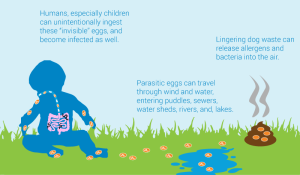 Besides lingering waste giving your property an unpleasant scent, dog manure can contain several types of parasites at any given time, even while the dog is showing no symptoms. In fact, just one gram of dog feces can contain 23 million bacteria. Most of these parasites are zoonotic, meaning they can spread infection through both other canines and humans as well. Once a human is infected, the results can vary from having flu-like symptoms to very serious consequences. Children and the elderly are the most at risk due to their weaker immune systems. There have been several cases documented where children have slipped on or unknowingly made contact with a pile of dog droppings in a public area, consequently becoming partially blind due a parasite infecting their retinas.
Besides lingering waste giving your property an unpleasant scent, dog manure can contain several types of parasites at any given time, even while the dog is showing no symptoms. In fact, just one gram of dog feces can contain 23 million bacteria. Most of these parasites are zoonotic, meaning they can spread infection through both other canines and humans as well. Once a human is infected, the results can vary from having flu-like symptoms to very serious consequences. Children and the elderly are the most at risk due to their weaker immune systems. There have been several cases documented where children have slipped on or unknowingly made contact with a pile of dog droppings in a public area, consequently becoming partially blind due a parasite infecting their retinas.
Not only can the feces act as a vessel for spreading contagions, but it can attract rodents and mosquitoes that can further spread the presence of disease, making it a dangerous place for your residents, visitors, and potential customers to walk.
Shortcuts are not the best solutions:
- Mothballs (Dangerous!)
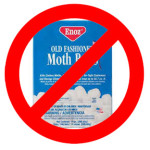 Property managers have been known to throw crushed up mothballs onto the ground, the idea being that it will repel dogs from relieving themselves in that area. The problem with this is that mothballs are very toxic to dogs, as well as children and the environment. Mothballs are meant to slowly release vapors over time that repel moths and kill those that are close enough in proximity. However, the chemicals if ingested, inhaled, or even absorbed through the skin, can cause a dog or human to vomit, develop kidney issues, fall into a coma, and possibly face death.
Property managers have been known to throw crushed up mothballs onto the ground, the idea being that it will repel dogs from relieving themselves in that area. The problem with this is that mothballs are very toxic to dogs, as well as children and the environment. Mothballs are meant to slowly release vapors over time that repel moths and kill those that are close enough in proximity. However, the chemicals if ingested, inhaled, or even absorbed through the skin, can cause a dog or human to vomit, develop kidney issues, fall into a coma, and possibly face death.
- Monetary Fines
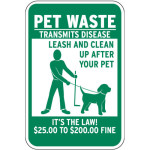 A more common trend used by managers is to place signs around the vicinity that threaten those who don’t pick up to face fines (usually around $25-$200). The problem with this method is it tends to give off an unwelcoming impression to those that come onto the property. Managers should understand that a majority of the instances where people don’t pick up is not meant to be a disrespectful act. To be human means to make a mistake every now and again. The number one reason why a doggie doo is left out is because the person innocently forgot to bring bag with them for the walk – a pet waste station can easily solve that problem.
A more common trend used by managers is to place signs around the vicinity that threaten those who don’t pick up to face fines (usually around $25-$200). The problem with this method is it tends to give off an unwelcoming impression to those that come onto the property. Managers should understand that a majority of the instances where people don’t pick up is not meant to be a disrespectful act. To be human means to make a mistake every now and again. The number one reason why a doggie doo is left out is because the person innocently forgot to bring bag with them for the walk – a pet waste station can easily solve that problem.
There are many other reasons why one may abandon the poop, one of which being one is not able to find it when walking their dog at night. If you can, have lights near your pathways if you expect dog walkers to be roaming the area when it gets dark.
Our recommendation is to avoid those awkward conversations between manager and patron over a poopy mess, and make as many accommodations as you can to have your business viewed as a more welcoming and dog-friendly place to be.
The construction of a pet waste station
Most pet waste stations are built out of aluminum metal as they do not absorb the smells like wood and plastic would do. They typically come in green or black, and stand about 7-8 feet tall.
There are four main parts:
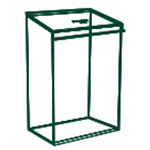 Waste bin receptacle: This is where all the bagged waste goes. This deep, yet narrow container can hold around 10-13 gallons. The bin is design to have a small opening in order to prevent larger pieces of trash from entering. The lid is fashioned to only open with human force in order to prevent rodents, insects, and water from getting in.
Waste bin receptacle: This is where all the bagged waste goes. This deep, yet narrow container can hold around 10-13 gallons. The bin is design to have a small opening in order to prevent larger pieces of trash from entering. The lid is fashioned to only open with human force in order to prevent rodents, insects, and water from getting in.
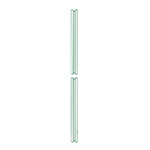 Station post: This is the supporting pole that holds up the entire pet waste station. Every part should be somehow secured to this post. The bottom end is dug deep into the ground where cement is poured around it to grant more stability.
Station post: This is the supporting pole that holds up the entire pet waste station. Every part should be somehow secured to this post. The bottom end is dug deep into the ground where cement is poured around it to grant more stability.
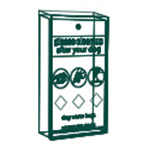 Bag dispenser: A simple mechanism to provide sanitary poopie bags for pet owners to use to pick up after their dog. Depending on what type of bag the station is meant to hold, the dispenser can usually store between 400 and 800 bags. Access to the dispenser is locked with a key so that a person can only take one bag at a time and not an entire roll.
Bag dispenser: A simple mechanism to provide sanitary poopie bags for pet owners to use to pick up after their dog. Depending on what type of bag the station is meant to hold, the dispenser can usually store between 400 and 800 bags. Access to the dispenser is locked with a key so that a person can only take one bag at a time and not an entire roll.
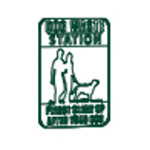 Station sign: This is a sign that is placed directly above the bag dispenser. Its purpose it to both identity the receptacle as a place for pet waste, as well as encourage pet owners nearby to pick up after their dogs. The basic sign that comes with a station typically displays a short and polite message, such as “Please clean up after your dog”.
Station sign: This is a sign that is placed directly above the bag dispenser. Its purpose it to both identity the receptacle as a place for pet waste, as well as encourage pet owners nearby to pick up after their dogs. The basic sign that comes with a station typically displays a short and polite message, such as “Please clean up after your dog”.
There are custom signs you can order to include messages about fines, or to add a informative statement such as “Help prevent the spread of disease by picking up.” Something to consider is a recent study conducted by NC State University, which found that a majority of people feel that the message, “Waste spreads disease,” may not be as effective as a sign that notes a specific disease.
Choosing the right type of setup for you
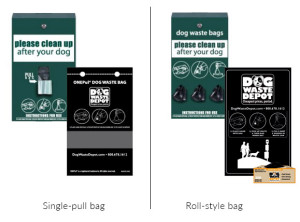
The other difference between the bags is that roll-style bags can be stored in higher quantities compared to the single-pull bags. It is recommended that places with higher dog walking traffic (such as dog parks or recreational parks) should use the roll-style bags, as to avoid the chance of the dispenser running out before being resupplied. Office parks and apartment complexes may prefer the the single-pull bags as they will probably have less dogs coming through, and many of the walkers might already have their own bag to spare.
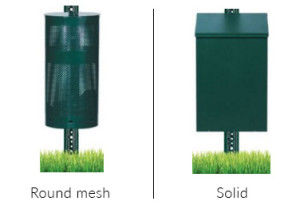
You will see that some companies with buy a station with a bag dispenser, but no bin. This is usually purchased by a business that (1) Has too little ‘paw’ traffic and therefore it is unnecessary to hire someone to maintain emptying the bins, so they simply don’t have one. (2) Has too much ‘paw’ traffic and not enough staff to keep up with it, so they buy/make their own larger set of bins that can hold more waste for the week.
Choosing the right location
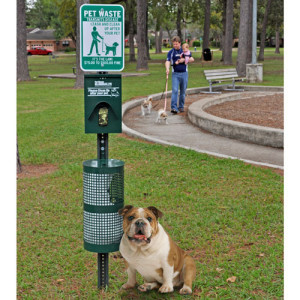
The first thing to look at is if there are any paths that exist on your land. Are there certain walkways where people typically take their canines? If it is a short path, you may be able to place a station right in the middle. If it is a longer path, you may want to purchase multiple stations to space out along the path.
If you don’t have paths, check to see where dog walkers are using congregating, or see where the most droppings are being placed. Be mindful of windows, porches, and patios as you do not want to ‘punish’ certain residents by placing a station too close to their unit. Try to be as fair as possible and evenly space the stations from each unit at equal distances (as best you can).
Tips for apartment complex, hoa’s and condominiums:
Asheville is highly recognized as a big dog loving community, however pet owners that rent may feel otherwise. Surprisingly, most apartments in Asheville don’t allow pets, and if they do, it is usually cats and small dogs only. Brother Wolf and Asheville Humane Society report that the number one reason why an animal is returned to their shelter is because the person’s new landlord won’t allow their pet to live there. It was reported in 2014 that over 400 animals were brought back to the shelter due to housing restrictions. Many pet owners see their dogs as their kids, and being told you cannot live with them anymore can be a devastating situation.
If you think about it, actually allowing pets to stay at your location can be a great advantage for your business.
Here are two examples of successful renting companies that support their residents to have pets:
Alpha Real Estate
 Alpha Real Estate is a property management company that handles a multitude of locations across Asheville and surrounding areas, and have always been proudly advertising that they offer pet-friendly rentals. They have stated, “We do everything we can to ensure that pets are cared for like family and that responsible pet guardians are given the respect that they deserve!”
Alpha Real Estate is a property management company that handles a multitude of locations across Asheville and surrounding areas, and have always been proudly advertising that they offer pet-friendly rentals. They have stated, “We do everything we can to ensure that pets are cared for like family and that responsible pet guardians are given the respect that they deserve!”
Alpha Real Estate believes that as long as the pet owner is responsible and a good caretaker, they deserve the right to have their pets live with them. The company just has a few requirements before the potential resident can apply for their pet’s residency. (1) Meet with the property owner and explain how you are a responsible and loving caretaker for your animal (2) Purchase a city license for your dog (3) Pet must be spayed/neutered and up to date on all shots.
Amazingly, they do not charge pet fees or pet rent, although they do ask for refundable (and reasonable) pet deposit.
Hawthorne at the Peak
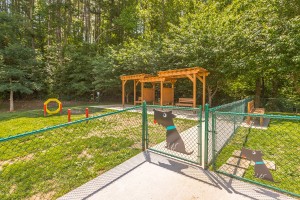 Hawthorne at the Peak is a stunning (and quite large) complex, located at 50 Barnwood Drive Asheville, NC – off of Weaverville Highway. Not only do they have pet waste stations scattered throughout their vicinity, they have an amazing “Bark park”, split into a two sections for small and large dogs, and features large open spaces and even agility equipment for the dogs to utilize.
Hawthorne at the Peak is a stunning (and quite large) complex, located at 50 Barnwood Drive Asheville, NC – off of Weaverville Highway. Not only do they have pet waste stations scattered throughout their vicinity, they have an amazing “Bark park”, split into a two sections for small and large dogs, and features large open spaces and even agility equipment for the dogs to utilize.
It is little commodities like this that really set your business apart from the others. Not only does it show you are a pet-friendly place, but that you care about the community and their furry friends alike.
If you are still a little weary about letting pets onto your property and feel like you need a little extra help convincing people to be responsible, Pet Poo SKiddoo, a local pet waste removal company in Asheville, offers free flyers and brochures that can be printed and distributed to further educate others about the importance of cleaning up after your dog. Pet Poo Skiddoo also offers free talks and you can request them to hold an open seminar at your location at no cost.
How to maintain
So now you have your pet waste stations set up and people are being encouraged to pick up their dog’s waste. But in order to keep up that encouragement, you must stay on top of those stations and ensure they remain clean and functional. Just like when a trash can gets full, if a station gets too full, people will stop disposing items it in, and perhaps not even bother picking up at all.
Your main priority should be to keep those dog bag dispensers full and the bins empty. Make sure to keep a steady supply of doggie bags and liners to have ready at all times.
A good idea in ensuring that your pet waste management plan continues to be successful is to create a weekly schedule for emptying, restocking and maintaining your pet waste stations. Upon inspection, you should also test out the lid and bag dispenser, to make sure they are still in working order. You may need to spray WD40 on the hinges, and tighten up the bolts from time to time.
Consider hiring a pet waste removal service
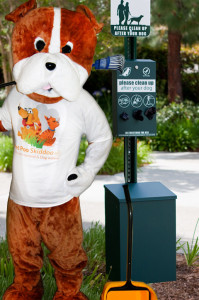 Pet Poo Skiddoo can not only maintain your pet waste stations, but scoop your property as well to ensure a clean and safe environment. Pet Poo Skiddoo offers:
Pet Poo Skiddoo can not only maintain your pet waste stations, but scoop your property as well to ensure a clean and safe environment. Pet Poo Skiddoo offers:
- Weekly or biweekly visits to your property
- Restocking disposable bags and bin liners (we supply all bags)
- Removes all waste from premises so you no longer have a smelly dumpster
- Maintains functionality of station and readjusts parts when needed
- Notifies you if the station’s service schedule needs to be increased or decreased.
- Maintains a clean look, and wipes down any unwanted smudges or dirt
- Optional scooping of the property for those who did not pick up
- Optional deodorizing of the pet station once a month

